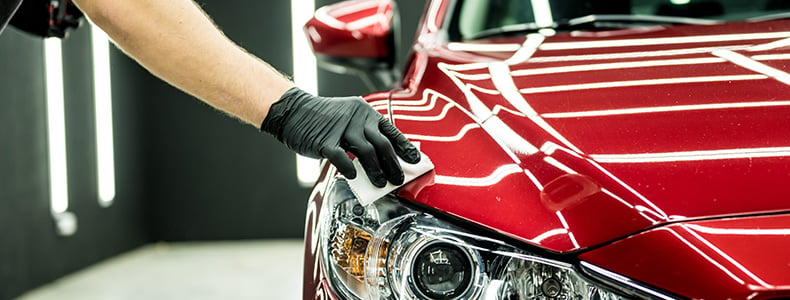Working with your service provider to prepare a financial model can help you position yourself as a strong investment option to both traditional and non-traditional sources of capital—a robust model will help you showcase the strength of the business and model the potentially lucrative impacts of expansion opportunities. As you go to market, consider how you will lead prospective investors through the financial impacts of your strategic vision.
The shifting economic realities from the pandemic have had significant consequences across Canadian industry, but for the automotive retail sector, the swift recovery to unit sales has allowed dealers to capitalize. What began as a concerning downward trend to new unit sales in the latter half of March 2020, summary data shows a sharp recovery by May, with unit sales more than doubling April volume to 109,173 units.
New Motor Vehicles in Canada
Source: Stats Canada
The combination of restored consumer confidence in the auto retail market, along with significant government incentives to the retail sector has allowed dealers to recover quickly in the short term. Additionally, the luxury market was less affected by the pandemic. Average vehicle cost continued to rise through 2020, posting a record high in April 2020 of $48,300 dollars per unit.
However, auto retail has long been hailed as a business model ripe for transformation–the disruptive trends looming on the horizon have been predicted by many to represent a catalyst moment for the industry, and are forecast to usher in a new age of automotive retail. Indeed BDO’s automotive retail group has seen a significant acceleration in the space for dealer principals to review their business models, and begin making larger plays in the market consistent with their strategic vision and core competencies. The opportunities present in the wider landscape of retail auto, for good operators, are undeniable.
The M&A landscape:
M&A activity prior to the pandemic was strong, with private equity, banks and other financial institutions offering capital for transactions. But with the onset of the pandemic, the automotive sector saw steep lows in Q2 and Q4 of 2020 as a result of significant market volatility and lack of investor confidence.
Total Announced Deals, Automotive
Source: Refinitiv
However, survey data shows that over 70% of business owners are looking to transition between now and the next five years. In a partnership with BDO, FEI Canada conducted a joint study surveying over 130 financial executives and business owners to gain deeper insights into how they plan to exit their business, as well as their level of understanding of the transaction process.
Top three drivers to sell:
Top three exit options:
For automotive retail, the reasons behind exit are varied, from planned retirement, to fatigue brought on by market volatility, or an unwillingness to reinvest millions into their real estate from OEM upgrade mandates. However, savvy operators looking to accelerate their growth plans should begin building their war chests to capitalize on the coming wave of acquisition opportunity.
Build your war chest: Step 1–Assess your Strategic Vision
As the business model for auto retail has begun to transform, so too has the strategic vision of the principal. Gone are the days of riding the status quo dealership business model—a new wave of diversification has entered the landscape.
Although business strategists often suggest complex models to assess the pros and cons of various opportunities, from our experience, the best place to start is to ask yourself this simple question:
Where am I right now, and what am I good at?
Be introspective and do some soul searching. Are you operationally strong and do you excel at the day-to-day operational management of the business? Are you a savvy real estate investor—have you made lucrative land purchases and do you want to expand your portfolio? The diversified business model means the options on the table for dealers are expanding along with the investor matrix. We have seen dealers sell the real estate, but keep the operating business, as well as others sell their best stores in urban centers to fund large scale growth plans outside of city centers. Determining your core competencies will help you build your strategic vision and navigate the path to opportunity.

Build your war chest: Step 2–Build liquidity
Once you have determined your strategic vision and have begun mapping out your unique road to growth, you need to consider how to fund your planned investments. The key is to build liquidity that supports your best use of capital and your strategic vision. The following are potential paths for funding growth:
Debt structuring: the dealership business model is one that is highly leveraged, so restructuring debt can have immediate impacts on the business’s bottom line. Cleaning up the balance sheet will help position the business to gain access to capital from both traditional and non-traditional lenders. If you are carrying debt from multiple lenders at different rates, consider engaging your professional service provider to discuss a strategic plan to rebalance the debt. This will open up options for better rates, more flexibility, and higher thresholds.
Non-traditional sources of capital: The diversification of the pool of financial buyers has continued as auto dealerships have maintained their status as a lucrative investment. From private equity looking for entry points to family offices aiming to diversify, the options to raise capital for investment into real estate portfolio expansion, operational expansion, or both, are available from many sources. Remember, different players will have different interest—make sure you are seeking out the right fit for your strategic vision.
Raising Capital—The benefits of financial modeling
Build your war chest: Step 3–Review operations
Good business hygiene sets the foundation of your operations. Conducting a deep dive into the operational management of the business will invariably uncover opportunities to improve cash flow. When COVID-19 hit in March 2020, many dealerships were forced to scale back staff and tighten their operations to weather the unknowns. Although the challenges during the early months of COVID-19 are undeniable, it did give dealers a unique opportunity to see how the business could do more with less. As a result, operators have become leaner and more strategic when it comes to staffing, opening up new opportunities for evolving their operational model. Leaner operations means more capital to reinvest into expansion opportunities that support your strategic vision.

BDO can help
You have challenges and we have solutions. BDO’s automotive retail team understands every piece of the auto dealership lifecycle and can help achieve your strategic vision. Our professionals have the experience to help from value ideation to value creation. We have an extensive stable of clients, understand the industry, and provide high value services.